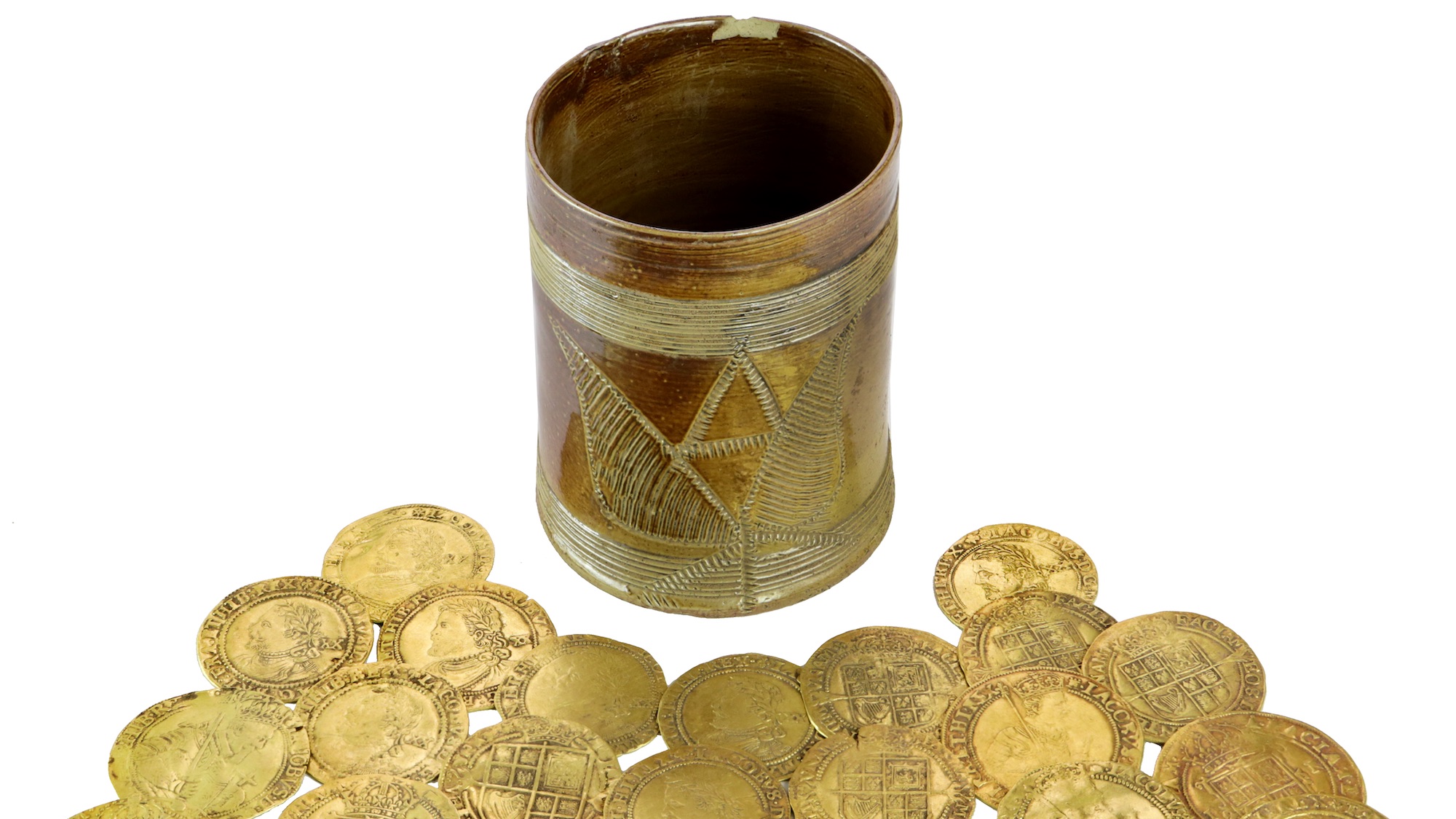Gold coin hoard worth $300K found beneath kitchen floor in England
"It is one hell of a piggy bank."

Homeowners in the United Kingdom discovered a stash of gold coins hidden beneath the wood floorboards of their kitchen during a renovation.
The cache, which is estimated to be valued at around $290,000 (250,000 pounds) at auction, is believed to be one of the largest hoards of 17th- and 18th-century English gold coins ever found in Britain and includes more than 260 gold coins dating to between 1610 and 1727, according to CNN.
The discovery occurred in 2019, when contractors unearthed a salt-glazed earthenware cup, similar in size to a soda can, as they pried up the floorboards during the renovation project at the 18th-century home, located in Ellerby, a village in North Yorkshire.

Upon further inspection, the workers found some of the coins rattling inside the cup, which consisted mainly of 50- and 100-pound coins "that were used at the time," as well as a Brazilian coin that circulated in England during the 1720s, according to a statement from Spink & Son, a London-based auction house.
"It is a wonderful and truly unexpected discovery from so unassuming a find location," Gregory Edmund, an auctioneer with Spink & Son, told CNN.
Related: Ancient hoard of gold Roman coins discovered in plowed UK field
The coins likely belonged to Joseph and Sarah Fernley-Maisters, members of an influential mercantile family that included several members of Parliament who lived in the area during the late 1600s and early 1700s, according to the statement.
Get the world’s most fascinating discoveries delivered straight to your inbox.
"Joseph and Sarah clearly distrusted the newly formed Bank of England, the 'banknote' and even the gold coinage of their day because they [chose] to hold onto so many coins dating to the English Civil War and beforehand," Edmund said in the statement. "Why they never recovered the coins when they were really easy to find just beneath original 18th-century floorboards is an even bigger mystery, but it is one hell of a piggy bank."
Next month, the treasure trove will go up for auction through Spink & Son and is expected to fetch nearly $300,000.
Originally published on Live Science.
Jennifer Nalewicki is former Live Science staff writer and Salt Lake City-based journalist whose work has been featured in The New York Times, Smithsonian Magazine, Scientific American, Popular Mechanics and more. She covers several science topics from planet Earth to paleontology and archaeology to health and culture. Prior to freelancing, Jennifer held an Editor role at Time Inc. Jennifer has a bachelor's degree in Journalism from The University of Texas at Austin.


